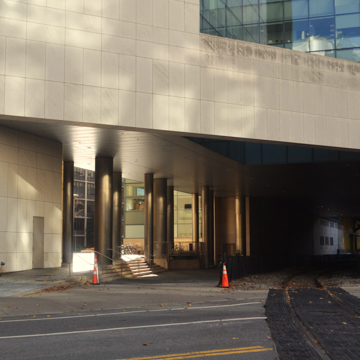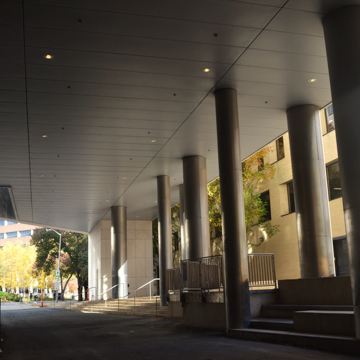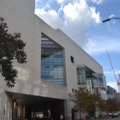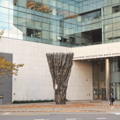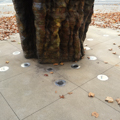You are here
Brain and Cognitive Sciences (BCS) Building (Bldg. 46) (McGovern Institute for Brain Research, Picower Center for Learning and Memory, and Department of Brain and Cognitive Sciences)
A more provocative contrast could hardly be imagined than the confrontation of the BCS Building opposite Frank Gehry's Ray and Maria Stata Center (MT5). Sharp, precise angles of the triangular site form a contrapuntal dialogue with the discordant notes of the latter. Architects were mindful of the location bordering on railroad tracks, which caused vibrations from freight trains, and so they raised the building's foundations accordingly. Adding to complexities of the site, the program had to accommodate three different research centers, as cited above.
At the core of the handsome seven-story limestone and glass structure, the central atrium rising from the third floor constitutes the logical meeting place. A cable truss supports the skylight, thus animating the ninety-foot-high sun-filled courtyard, forming
Writing Credits
If SAH Archipedia has been useful to you, please consider supporting it.
SAH Archipedia tells the story of the United States through its buildings, landscapes, and cities. This freely available resource empowers the public with authoritative knowledge that deepens their understanding and appreciation of the built environment. But the Society of Architectural Historians, which created SAH Archipedia with University of Virginia Press, needs your support to maintain the high-caliber research, writing, photography, cartography, editing, design, and programming that make SAH Archipedia a trusted online resource available to all who value the history of place, heritage tourism, and learning.

















